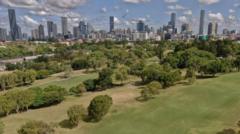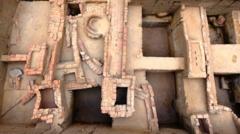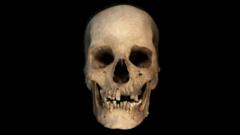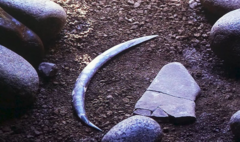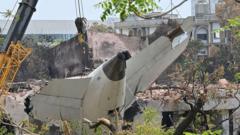Six years after its discovery, a significant skeleton from the Solanki period is still without a proper museum home in Gujarat. While archaeological experts emphasize its importance for understanding local history, bureaucratic red tape continues to delay its preservation and display.
Ancient Indian Skeleton Awaits a Home Amid Bureaucratic Delays
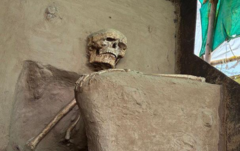
Ancient Indian Skeleton Awaits a Home Amid Bureaucratic Delays
A historic 1,000-year-old skeleton found in Vadnagar, India, remains unprotected in a makeshift shelter due to government disputes on its rightful museum placement.
A 1,000-year-old human skeleton discovered in Vadnagar, India, is still awaiting a designated museum to showcase it, despite being unearthed six years ago. The skeleton, found sitting cross-legged in a meditative position, was identified by archaeologist Abhijit Ambekar in 2019 and remains a vital artifact for historical research. Yet, administrative disagreements regarding ownership and responsibilities have kept this ancient human remains in a makeshift shelter.
The skeleton’s discovery was significant as it provided insights into the Solanki dynasty that ruled Gujarat from 940 to 1300 CE. Ambekar described the skeleton’s distinct posture, with its right arm resting on its lap and left arm seemingly suspended, elevating its archaeological importance. Expert assessments indicate that the skeleton could reveal details about the lifestyle of people from that era.
While a plan was initiated to place various excavated artifacts, numbering around 9,000 from Vadnagar, into local museums, the skeleton is caught in red tape, with the Gujarat state government claiming it remains with the Archaeological Survey of India (ASI). Pankaj Sharma, director of the state's Directorate of Archaeology and Museums, noted that procedural issues hindered its transfer to a museum.
Experts highlighted the urgent need for proper housing for the skeleton, as it currently rests under a tarpaulin, exposed to environmental elements and occasionally visited by curious locals. While there is a new Archaeological Experiential Museum nearby, inaugurated just earlier this year, it ironically does not house the actual skeleton, instead displaying only a photograph of it.
Vadnagar, known as Prime Minister Narendra Modi's birthplace, holds historical significance, with evidence of human settlements traced back over 2,000 years. Mr. Ambekar stated that the DNA analysis of the skeleton confirmed it belonged to a man in his forties, although further studies could enhance our understanding of his dietary practices and lifestyle from a millennium ago.
The excavation process itself was meticulous, taking two months to complete as the team employed careful techniques to free the skeleton from its resting place. Frustration mounted among locals who commented on the bureaucratic delays hindering the skeleton’s placement in a proper museum. "This treatment of a 1,000-year-old skeleton is deeply concerning," expressed Vadnagar resident Jesang Thakor, calling for action to honor the town's rich history.
As the hope for clearer pathways to the skeleton's future remains, local residents and archaeologists alike express their desire for it to find a permanent, secure home amidst its long and storied journey through time.

